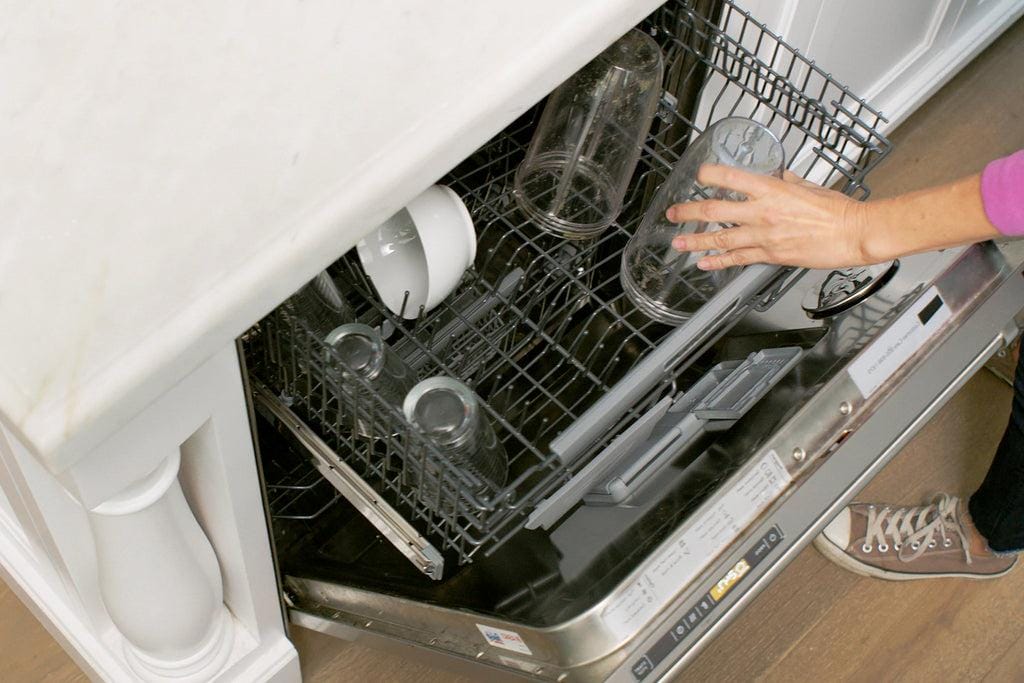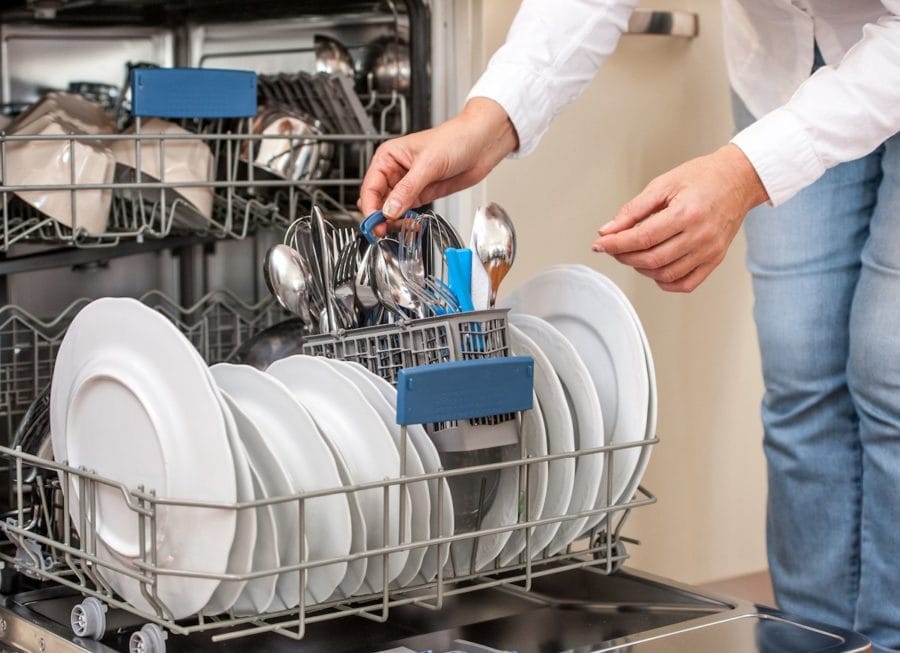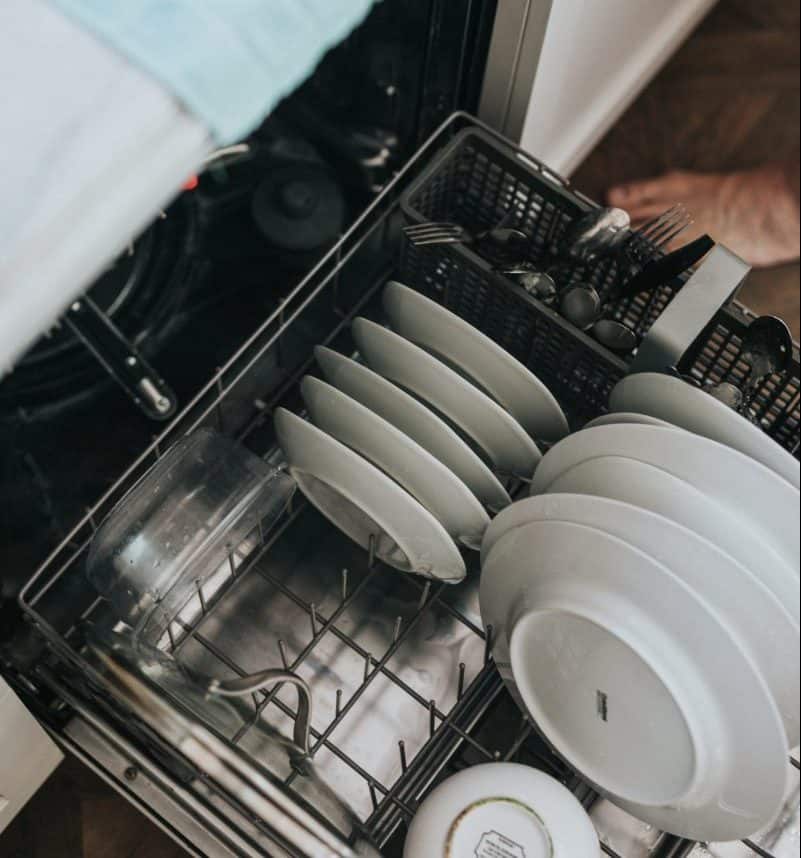A dishwasher offers a swift solution for sanitizing soiled tableware. The question of whether Can You Put A Blender In The Dishwasher? is problem among appliance users.
The safety of placing a blender in a dishwasher hinges on its construction materials. Typically, components such as the blending jar, top, blades, and seal rings can endure the dishwashing environment. However, any parts housing electrical elements or that are treated with a unique finish should not be exposed to the dishwasher’s conditions. Consulting the guidelines provided by the blender manufacturer remains the most reliable approach to determine appropriate cleaning methods.
This article of Food and Meal intends to delve into the suitability of dishwashers for cleaning blenders, including the safety measures one should consider during the process.
Which Parts Of The Blender You Can Put In The Dishwasher?
Caring for our beloved blenders means being considerate of their individual parts, especially when it comes to the dishwasher. Let’s share a moment to talk about the bits and pieces of our blending buddies that can brave the suds and sprays of the dishwashing machine.
Your blender’s jar is quite the tough cookie—be it glass or plastic, it stands up well to the cleaning cycles. Just remember to be gentle on its special coatings by choosing milder detergents. The lid, too, handles the spa day in the dishwasher like a champ, thanks to its rubber or plastic makeup.
Blades can be a bit finicky, and rightly so with all the hard work they do! Depending on their composition, the dishwasher’s embrace might dull their performance or affect any special coatings. If you’ve got the green light from the maker that they’re dishwasher friendly, you can confidently give them a whirl in there—but let’s not get too aggressive with detergents, shall we?

Now, about those gaskets – it’s like knowing a friend’s dietary restrictions. They’re usually made of materials that can handle the heat but check if they’re the sensitive type before exposing them to the dishwasher’s robust environment. If they’re not up for it, a gentle wipe-down does the trick beautifully.
As for the motor base and its electrical innards, I’d treat them with utmost respect—no dishwashers for these parts, as water and electricity are never a merry mix. It would be heartbreaking to find these parts damaged due to our love for convenience.
When it comes to both glass and plastic jars, they’re generally okay to take a dive in the dishwasher. Yet, like caring for something precious, it’s wise to handle with care—the top rack is a cozy place for glass to avoid any nasty heat shocks, and a soft, warm bath with gentle soap suits plastic just fine. These little acts of kindness help in keeping them pristine and prevent any premature aging.
Hand Or Dishwasher Cleaning: The Best Blender Cleaning Method
Below, we have compiled and compared the use of dishwashers and the use of hands in Blender cleaning
| Aspect of Cleaning | Hand Cleaning | Dishwasher Cleaning |
| Duration | Takes more time to clean thoroughly. | Quicker since the machine does the work. |
| Risk of Physical Damage | Minimal risk if done gently. | Risk present if parts are not dishwasher-safe. |
| Difficulty Level | May require effort, especially with tough residue | Effortless—just load the machine and start it |
| Cleaning Thoroughness | Allows for meticulous cleaning of each part. | Sometimes may not reach all crevices or remove all residues. |
| Hygiene | Less effective in bacteria removal without proper technique. | High heat and detergents can sanitize effectively. |
Choice between hand cleaning and using a dishwasher comes down to your preference in balancing factors such as time, effort, the specific requirements of your blender, and how deeply you wish to clean it. Both methods can lead to a sparkling clean blender ready for your next culinary adventure.
Are Glass Or Plastic Blender Jars Safe In The Dishwasher?

The dilemma of selecting the perfect blender jar—glass versus plastic—it’s akin to choosing a favorite dessert, they both have their charms! Glass holds its own with toughness and a virtuous resistance to scratching, adding a touch of elegance to our kitchen ballet. Plastic, the humble counterpart, wins hearts with its affordability and resilience, a dependable friend indeed.
When it comes to their well-being in the swirling waters of a dishwasher, your concern is heartwarming—I too, wish for every jar to come out shining and unscathed. Thankfully, both glass and plastic jars can withstand the dance inside the dishwasher; however, they do appreciate a bit of TLC.
For those cherished glass jars, cradling them in the secure embrace of the top rack shields them from the tempestuous heat below, especially during the heat-dry cycle, where the scalding breath could mar their beauty with cracks.
Plastic jars, those workhorses of the blending world, also ask for a kinder, gentler approach. A soft, loving detergent caresses them clean, avoiding the tragic fate of warping under the harsh glare of too much heat.
If we pamper both types with these thoughtful precautions, they will emerge from the dishwasher as gleaming as the day they first caught your eye, loyal in their duties without a single crack or bend out of shape.
Precautions Before Putting A Blender In The Dishwasher

Choosing to entrust your blender to the loving care of a dishwashing machine is an act of faith in modern convenience. However, as with all acts of trust, it is wise to proceed with caution and respect for the integrity of your culinary companion. Here are some gentle reminders to ensure that your blender emerges from its cleansing cycle both sparkling and intact:
- Consult the Oracle of Knowledge: Before even whispering the word “cleanse” to your blender, consult the sacred texts—namely, the user manual. This tome will reveal whether the manufacturer has imparted specific cleaning commandments that you must adhere to, lest you risk the well-being of your beloved appliance.
- Perform a Ritual of Disassembly: Approach your blender with a calm and methodical spirit, disassembling its parts with the care of a watchmaker. Even the smallest of components should be liberated if so your hands can manage. This act allows for a thorough purification, preventing any hidden morsels from evading justice.
- Elevate to the Topmost Sanctuary: When placing your blender’s components in the mechanical bath, choose the top rack—a sanctuary that places them at a safe distance from the fierce inferno below during the heat dry cycle. Here, the risk of melting, deformity, or cracking is greatly diminished.
- Invoke a Gentle Cycle: The cycle you choose should be akin to a soft-spoken lullaby rather than a boisterous anthem. Delicacy is key; select a cycle with a benevolent water pressure, one that your blender can withstand without fear. Refer also to the wisdom of your dishwasher’s manual for any recommended settings or incantations.
- Shield the Motor Base: This vital core of your blender’s spirit, the motor base, shall not partake in the aqueous adventure. Instead, anoint it with a warm, damp cloth to cleanse its outer form. Water and electricity mingle as poorly as oil and water; keep them apart as you care for your motor base by hand.
In following these steps, you show not only pragmatism but also reverence for the noble instruments that aid you in your culinary quests. Go forth and clean with confidence and a touch of whimsy.
Conclusion
Navigating the tender relationship between your blender and the dishwashing machine requires a sprinkle of care and a dash of knowledge. It’s like guiding a friend through a challenging journey—you want to ensure their safety and well-being. So before you usher your blending buddy into the watery realm of the dishwasher, pause and reflect: Is this path meant for them? The affirmation lies nestled within the manufacturer’s guidelines—consult these with the same attention you’d lend to a treasured map.
It’s a simple truth that not every blender is destined to frolic in the soapy cascades of a dishwasher. To send an unprepared friend into this adventure could lead to dire outcomes, a thought that clenches at our hearts. Like double-checking your passport before an international flight, verifying your blender’s eligibility for such a journey is a step that cannot be skipped.
If the stars align and your blender is indeed ready to be enveloped in the embrace of mechanized cleanliness, then approach the task with reverence. Adhere to the recommended precautions as lovingly as you would follow a grandmother’s recipe, ensuring that every step is measured, every action considered. In doing so, you invite the best possible outcome—a sparkling clean blender, ready to mix up your next delicious creation with the vigor of a trusty sidekick.
I'm Kelly Atkinson, with a passion for dissecting the world of home goods. My reviews stem from thorough testing and a love for sharing detailed insights. Each piece I write offers a glimpse into my explorative journey, aiming to guide readers to informed choices with authenticity and precision, making every review a blend of exploration and expertise.
